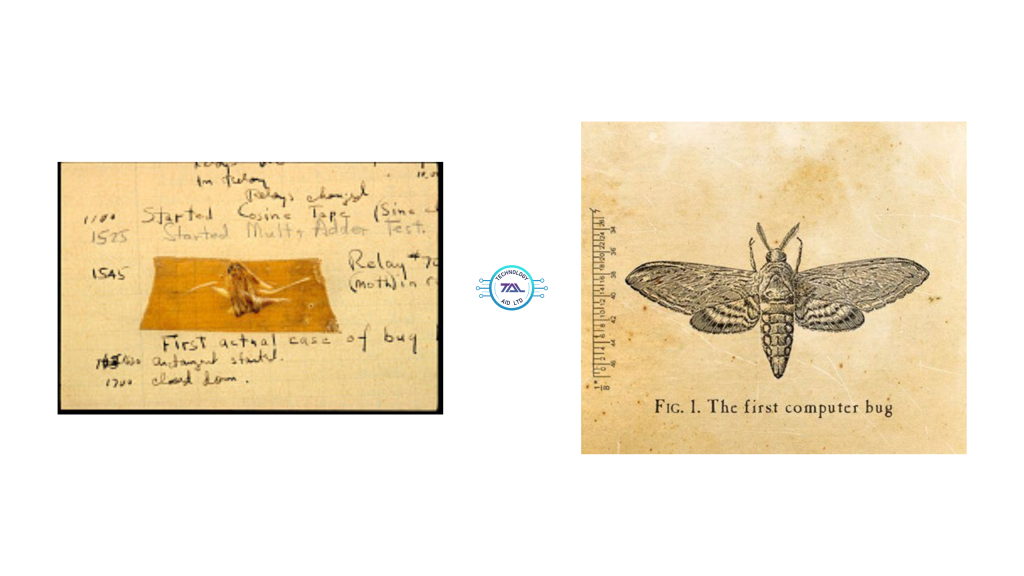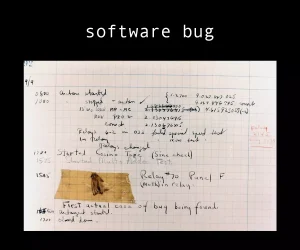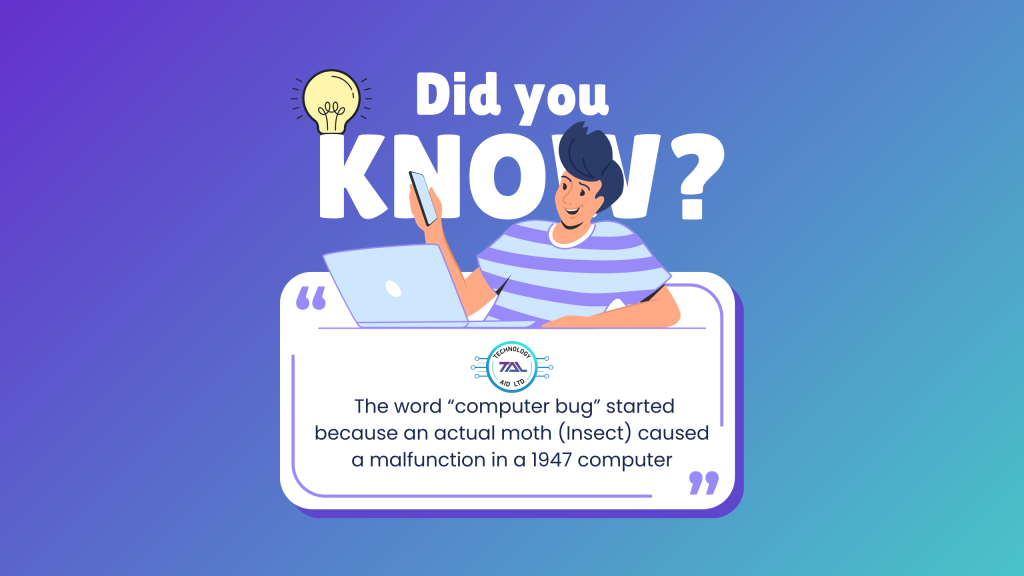The story behind the term “computer bug” is a fascinating mix of history and technology:
On September 9, 1947, engineers working on the Harvard Mark II computer encountered an actual moth trapped inside the machine’s relay, causing a hardware malfunction. They carefully removed the moth and taped it into their logbook with a note saying: “First actual case of bug being found.” This was recorded as a humorous way to describe the fault.
The incident was made famous by pioneering computer scientist Grace Hopper, who was part of the team. Although the term “bug” to describe technical malfunctions was already in use since the 19th century—famously by Thomas Edison—the moth incident solidified the phrase “computer bug” and also inspired the term “debugging,” which means finding and fixing errors in computer systems.
This story symbolizes how even a tiny creature could disrupt one of the earliest computers while highlighting the human creativity behind early computing problem-solving.

How Technology Has Come a Long Way Since Then:
Early computers like the Harvard Mark II were huge, room-sized machines with relays prone to mechanical failures and physical issues.
Modern computers are millions of times smaller, faster, and more reliable, using solid-state electronics with advanced error detection.
“Bugs” today are mostly software errors or design flaws, rarely literal insects.
Debugging has evolved into sophisticated automated tools and software testing methods ensuring reliability.
The incident also inspired a culture of rigorous testing and quality assurance that drives modern computing innovation.

So, from a literal moth causing a short circuit to today’s complex digital systems, technology has drastically evolved, making that first “bug” a legendary milestone in tech history.










